Looking for Expert-Level VA Claim Answers?📱Call Us Now! 737-295-2226
With the passage of the PACT Act, as a veteran, you probably have a lot of questions.
Did you know the PACT Act has the potential to benefit more than 5 million veterans?
If you’re a veteran who has been impacted by toxic exposure, and you meet the new presumptive criteria, don’t hesitate to file a VA claim!
You may be eligible for VA health care and VA disability compensation benefits that were previously unavailable to you.
What’s the bottom line?
In our experience, VA presumptive conditions under the VA PACT Act are easy to win because you just need to show on your DD 214 that you were in an eligible location during a specific period and that you developed a qualifying disability as a result.
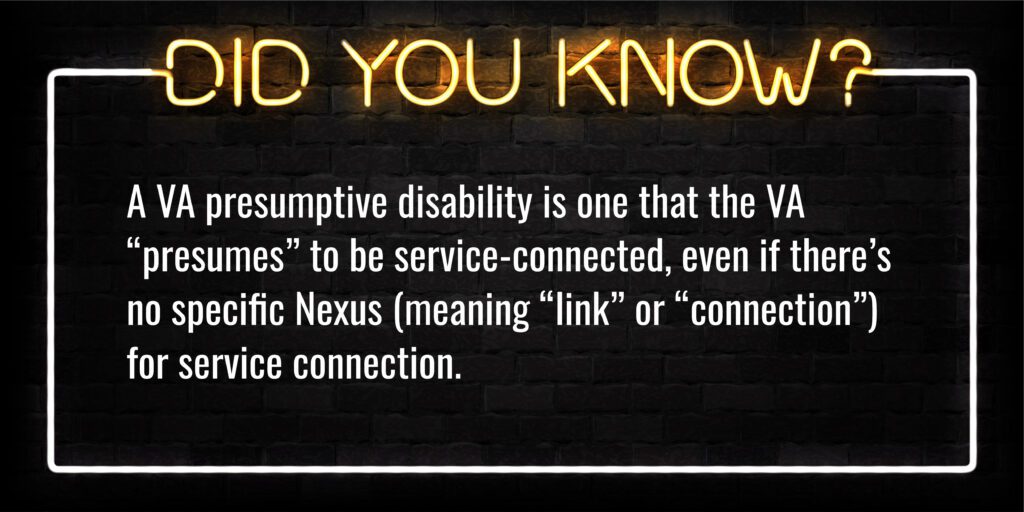
VA ratings for presumptive conditions range from 0% to 100%, depending on the condition and its severity of symptoms.
There are 10 primary categories that comprise the official VA Presumptive List that were impacted by the passage of the PACT Act, and we break them down in detail according to the disability name and Diagnostic Code (DC).
It’s important to note that many VA presumptive conditions are not in the VA Schedule for Rating Disabilities, and thus, are rated by analogy to the closest condition with similar symptoms.
The DCs we’ve listed below are the most likely codes for these conditions; however, VA Raters may choose to apply different diagnostic codes depending on the diagnosis and severity of symptoms.
Okay, let’s go!
- Where Can I View the VA PACT Act Bill Text?
- The VA PACT Act: What is a Presumptive Disability?
- Do You Deserve PACT Act VA Benefits?
- PACT Act Conditions: What is the PACT Act Presumptive List?
- #1. Prisoners of War (POWs)
- #2. Chronic Debilitating Diseases
- #3. PACT Act Update for Tropical Diseases
- #4. PACT Act Agent Orange Presumptive List
- #5. Asbestos Exposure
- #6. PACT Act Radiation Exposure Presumptive List
- #7. Mustard Gas or Lewisite Exposure
- #8. PACT Act Camp Lejeune Water Contamination Exposure
- #9. PACT Act Gulf War Syndrome Update
- #10. PACT Act Burn Pit Presumptive Conditions Update
- Need VA Disability Claim Help? WE’RE THE EXPERTS!
- About the Author
Where Can I View the VA PACT Act Bill Text?
Click the .pdf below to view the complete PACT Act bill text with amendments:
The VA PACT Act: What is a Presumptive Disability?

The PACT Act expanded the number of “presumptive disabilities” available for VA benefits.
A VA presumptive disability is one that the VA “presumes” to be service-connected, even if there’s no specific Nexus (meaning “link” or “connection”) for service connection.
Presumptive disability works like this: If you served at X location during the qualifying period and developed Y condition as a result, then X + Y = automatic service connection.
Instead of having to prove a service-connected disability, you only need to show on your DD 214 that you were in an eligible location during a specific period and that you developed a qualifying condition as a result.
We also recommend you write and submit a strong personal Statement in Support of a Claim.
Buddy letters can also be helpful in filling in any gaps in service or personnel records.
Do You Deserve PACT Act VA Benefits?
To qualify for PACT ACT presumptives or a higher VA rating, you must have proof!
By “proof,” I mean MEDICAL EVIDENCE.
“VA CLAIM SECRETS: Top 3 Strategies to WIN Your VA Claim, PROVE Service Connection, and INCREASE Your VA Rating in Less Time!”
[Former VA Raters] Reveal SECRET VA Claim Tips & Strategies for Veterans…
Click the button below to launch the FREE training:
PACT Act Conditions: What is the PACT Act Presumptive List?

- #1. Prisoners of War (POW)
- #2. Chronic Debilitating Diseases
- #3. Tropical Diseases
- #4. Agent Orange (Herbicides) Exposure
- #5. Asbestos Exposure
- #6. Radiation Exposure
- #7. Mustard Gas or Lewisite Exposure
- #8. Camp Lejeune Water Contamination Exposure
- #9. Gulf War Syndrome
- #10. Burn Pits and Particulate Matter Exposure
#1. Prisoners of War (POWs)

Former Prisoners of War (POWs) are eligible for presumptive disability regardless of how long they were on active service.
Thus, the 90-day active duty service requirement does not apply.
The only factor that determines qualification is the length of time imprisoned.
For some conditions, you must have been a POW for at least 30 days.
For the rest of the conditions, you must have been a POW for any length of time.
The following conditions qualify once they manifest to at least the 10% VA rating level at any time after discharge.
What is the PACT Act POW Presumptive List?
The following 20+ conditions comprise the VA’s POW presumptive list:
POW for any period:
- Psychotic Disorders, DC 9210
- Anxiety Disorders, DC 9400 series
- Residuals of frostbite, DC 7122 (must have been imprisoned in the cold)
- Degenerative arthritis caused by trauma, DC 5003
- Atherosclerotic heart disease, DC 7005
- Hypertensive heart disease, DC 7007
- Osteoporosis, DC 5013 (only if the veteran also has PTSD).
POW for 30 days or more:
- Avitaminosis, DC 6313
- Beriberi, DC 6314
- Dysentery, DC 7322
- Helminthiasis, DC 6320
- Pellagra, DC 6315
- Peripheral neuropathy, (unless caused by an infection that’s not related to service) DC 8520
- Cirrhosis of the liver, DC 7312 (unless caused by the veteran’s own willful misconduct).
- Osteoporosis, DC 5013 (only if the veteran also has PTSD).
#2. Chronic Debilitating Diseases
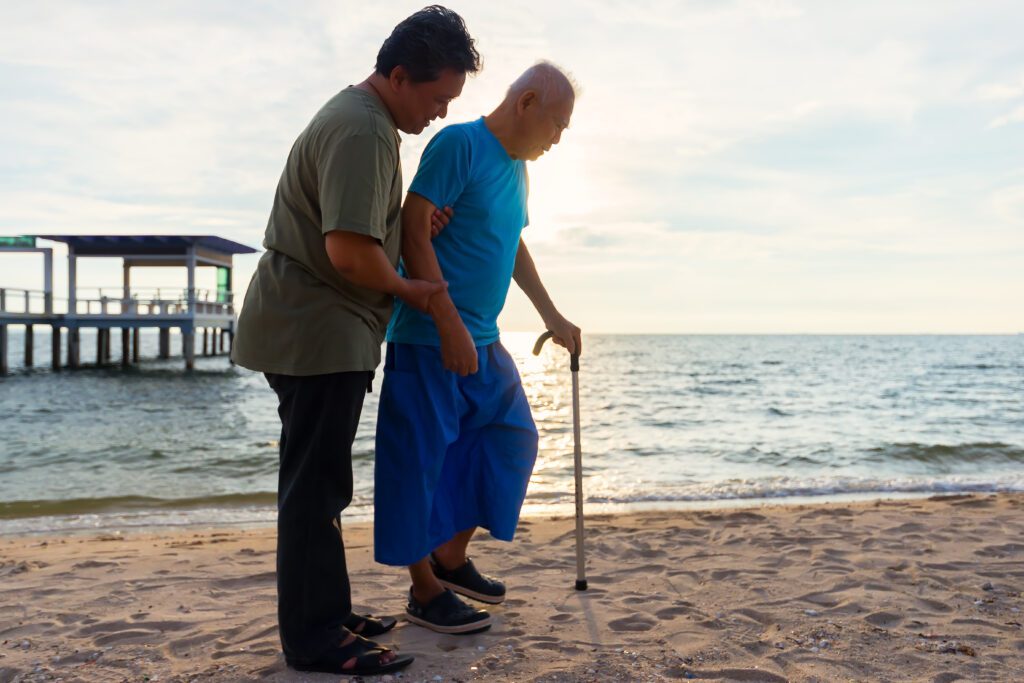
Chronic Debilitating Diseases include conditions that were diagnosed within the first year of leaving military service.
If any of the following chronic diseases are diagnosed within 365 days of discharge from active duty, then they are “presumed” to be caused by military service and, therefore, are eligible for VA disability benefits.
Any of these diseases will be considered “chronic” unless the condition was clearly caused by something not related to military service.
There are quite a few of these diseases on the 2023 VA Presumptive List, so we’ve organized them according to CFR Title 38, Part 4, the Schedule of Rating Disabilities by Body System.
Just click on the DC number to be taken to a detailed explanation about the disease and how it is rated by the VA, courtesy of Military Disability Made Easy.
*Disclaimer: Military Disability Made Easy, LLC is owned and operated by VA Claims Insider, LLC.
What is the VA Presumptive Conditions List?
The following 11 body systems and 50+ conditions are included in the VA’s presumptive list for chronic conditions:
Blood:
- Anemia, primary, DCs 7716-7723
- Hodgkin’s disease, DC 7709
- Leukemia, DC 7703
- Thrombocytopenia, DC 7705
Cardiovascular System:
- Arteriosclerosis, DC 7005
- Hypertension, DC 7101
- Endocarditis, DC 7001
- Valvular heart disease, DC 7000
- Raynaud’s syndrome, DC 7117
- Buerger’s disease, DC 7115
Digestive System:
- Gallstones, DC 7314
- Cirrhosis of the liver, DC 7312
- Gastric ulcer, DC 7304
- Duodenal ulcer, DC 7305
Endocrine System:
- Diabetes, DC 7913
- Any diseases of the thyroid, parathyroid, pituitary, or adrenal glands
Genitourinary System:
- Calculus of the bladder, DC 7515
- Kidney stones, DC 7508
- Nephrosclerosis, DC 7507
- Nephritis, DC 7502
Infectious or Immune Diseases:
- Hansen’s disease (a.k.a. Leprosy), DC 6302 (must manifest to 10% within 3 years)
- Lupus, DC 6350
- Tuberculosis (must manifest to 10% within 3 years)
Mental Disorders:
- Psychotic Disorders, DC 9210
Musculoskeletal System:
- Osteitis deformans (Paget’s disease), DC 5016
- Osteomalacia, DC 5014
Nervous System:
- Progressive Muscular Atrophy, DC 8023
- Brain hemorrhage, DC 8009
- Brain thrombosis, DC 8008
- Encephalitis, DC 8000
- Any type of Epilepsy
- Myasthenia gravis, DC 8025
- Myelitis, DC 8010
- Bulbar palsy, DC 8005
- Parkinson’s disease, DC 8004
- Amyotrophic Lateral Sclerosis (ALS), DC 8017 (can develop any time after discharge and qualify unless it is caused by a veteran’s own willful misconduct).
- Multiple Sclerosis, DC 8018 (must manifest to 10% rating level within 7 years)
- Syringomyelia, DC 8024
- Malignant cancer of the brain, DC 8002
- Malignant cancer of the spinal cord, DC 8021
- Malignant cancer of the nerves, DC 8540
- Any other “organic” Nervous System Diseases, such as Huntington’s Disease or Athetosis. “Organic” means that it is not caused by something specific such as a bacterium or virus.
Respiratory System:
- Bronchiectasis, DC 6601
- Coccidioidomycosis, DC 6835
- Sarcoidosis, DC 6846
Skin:
- Collagen-vascular disease, DC 7821
#3. PACT Act Update for Tropical Diseases
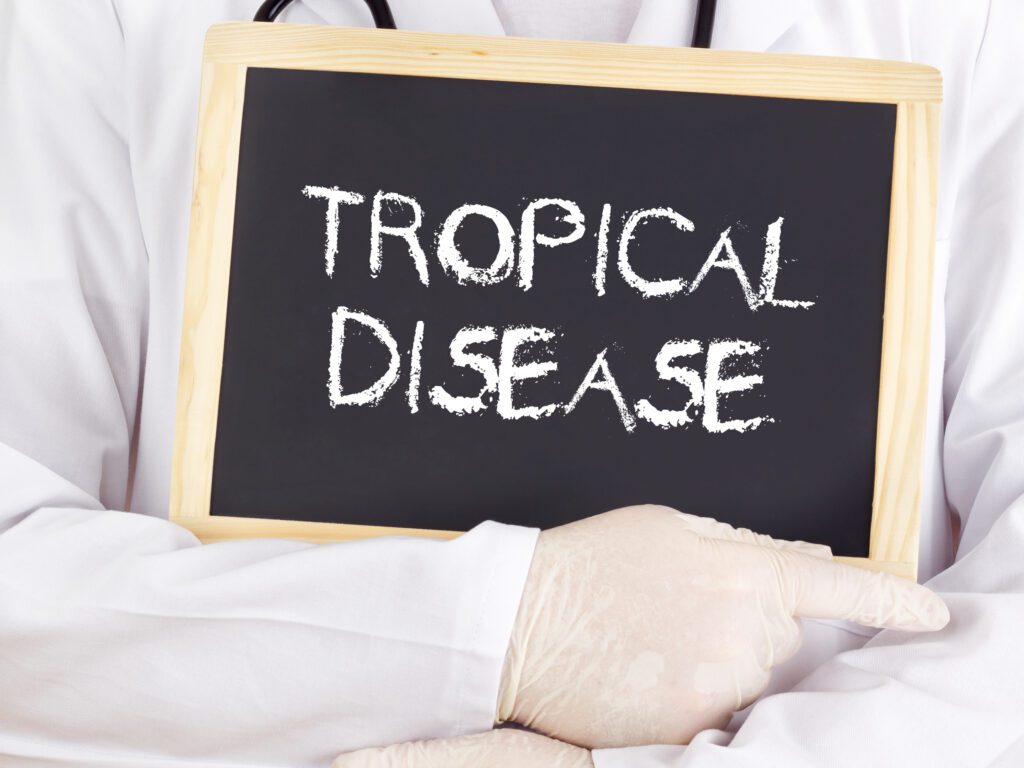
If a veteran served in a “tropical location” and later developed a qualifying tropical disease tied to that location, it can be considered service-connected if it manifests to the 10% rating level within 1-year of serving in the tropical location.
Note that some of the diseases on this VA Presumptive List have incubation periods, which is the time between infection and the manifestation of symptoms.
If the disease is medically known to have such a lengthy incubation period that the symptoms don’t begin until after the 1-year limit, it is still considered service-connected.
What is the Tropical Disease Presumptive List?
The following 18+ conditions comprise the VA’s Tropical Disease presumptive list:
- Amebiasis, DC 7321
- Blackwater fever, DC 6329
- Cholera, DC 6300
- Dracontiasis, DC 6320
- Dysentery, DC 7322
- Filariasis, DC 6305
- Leishmaniasis, including kala-azar, DC 6301
- Loiasis, DC 6320
- Malaria, DC 6304
- Onchocerciasis, DC 6320
- Oroya fever (carrion’s disease), DC 6306
- Pinta, DC 6310
- Plague, DC 6307
- Schistosomiasis, DC 6320
- Yaws, DC 6310
- Yellow fever, DC 6329
- Any resultant disorders or diseases originating because of therapy administered in connection with such diseases or as a preventative thereof
#4. PACT Act Agent Orange Presumptive List

The herbicide known as Agent Orange was used in both Vietnam and Korea during the 1960s and 1970s.
There are various locations and types of service that could have exposed a veteran to Agent Orange.
Any length of service is enough to qualify.
Thus, the 90-day rule does not apply to veterans exposed to Agent Orange.
Vietnam and Thailand:
Vietnam Veterans who served between January 9, 1962, and May 7, 1975, and Thailand Veterans who served between January 9, 1962, and June 30, 1976, are presumed to have been exposed to Agent Orange (unless there is solid evidence that they were not) if they served:
- In Vietnam (must have served at least one-day deployed to Vietnam)
- On ships included on the official Ship List
- Blue Waters Veterans who served within 12 nautical miles of the shores of Vietnam
- On or near military bases in Thailand, including U-Tapao, Ubon, Nakhon Phanom, Takhli, Korat, or Don Muang
South Korea:
Korean Veterans who served in the Korean DMZ between September 1, 1967, and August 31, 1971, are presumed to have been exposed to Agent Orange (unless there is solid evidence that they were not).
Laos:
Veterans who served in Laos between December 1, 1965, and September 30, 1969, are presumed to have been exposed to Agent Orange.
Cambodia:
Veterans who served at Mimot or Krek between April 16, 1969, and April 30, 1969, are presumed to have been exposed to Agent Orange.
Johnston Atoll:
Veterans who served on the Johnston Atoll between January 1, 1972, and September 30, 1977, are presumed to have been exposed to Agent Orange.
Guam or American Samoa:
Veterans who served in Guam or American Samoa between January 9, 1962, and July 31, 1980, are presumed to have been exposed to Agent Orange.
Air Force C-123s:
Veterans who had repeated contact with contaminated C-123s after the war also qualify as having been exposed to Agent Orange (see the VA’s list of Air Force Speciality DCs and Units for specifics on C-123 qualifications).
Testing, Storage, or Disposal:
Other veterans exposed to Agent Orange can qualify if they can show proof that they served where herbicides were tested or stored outside of Vietnam or were involved in the testing, storage, or disposal of herbicides in the US (see the full list of locations).
Reservists:
Reservists meet the requirements for Agent Orange exposure if they performed flight, ground, or medical crew duties at:
- Lockbourne/Rickenbacker Air Force Base (Ohio) between 1969 and 1986 in the 906th and 907th Tactical Air Groups or the 355th and 356th Tactical Airlift Squadrons
- Pittsburgh International Airport (Pennsylvania) between 1972 and 1982 in the 758th Airlift Squadron
- Westover Air Force Base (Massachusetts) between 1972 and 1982 in the 731st Tactical Air Squadron and 74th Aeromedical Evacuation Squadron, or 901st Organizational Maintenance Squadron
What is the Agent Orange Presumptive List?
The following 40+ conditions comprise the VA Presumptive List for Agent Orange and qualify for VA benefits if they manifest at any time, to any degree (unless otherwise noted).
- Primary amyloidosis, DC 7717
- Chloracne or similar acneform disease, DC 7829 (must manifest to 10% within 1 year of last exposure)
- Type 2 diabetes, DC 7913
- Hodgkin’s disease, DC 7709
- Ischemic heart disease, DC 7005 (does not include high blood pressure, peripheral vascular disease, or stroke)
- All chronic B-cell leukemias, DC 7703
- Non-Hodgkin’s lymphoma, DC 7715 (Blue Water Veterans are also eligible for this condition)
- Parkinson’s disease, DC 8004
- Peripheral neuropathy, DC 8520 (must manifest to 10% within 1 year of last exposure)
- Porphyria cutanea tarda, DC 7815 (must manifest to 10% within 1 year of last exposure)
- Prostate cancer, DC 7528
- Lung cancer, DC 6819
- Bronchial cancer, DC 6819
- Larynx cancer, DC 6819
- Trachea cancer, DC 6819
- Adult fibrosarcoma, DC 5329
- Dermatofibrosarcoma protuberans, DC 5329
- Malignant fibrous histiocytoma, DC 5329
- Liposarcoma, DC 5329
- Leiomyosarcoma, DC 5329
- Epithelioid leiomyosarcoma (malignant leiomyoblastoma), DC 5329
- Rhabdomyosarcoma, DC 5329
- Ectomesenchymoma, DC 5329
- Angiosarcoma (hemangiosarcoma and lymphangiosarcoma), DC 5329
- Proliferating (systemic) angioendotheliomatosis, DC 5329
- Malignant glomus tumor, DC 5329
- Malignant hemangiopericytoma, DC 5329
- Synovial sarcoma (malignant synovioma), DC 5329
- Malignant giant cell tumor of tendon sheath, DC 5329
- Malignant schwannoma, DC 5329
- Malignant mesenchymoma, DC 5329
- Malignant granular cell tumor, DC 5329
- Alveolar soft part sarcoma, DC 5329
- Epitheliod sarcoma, DC 5329
- Clear cell sarcoma of tendons and aponeuroses, DC 5329
- Extra-skeletal Ewing’s sarcoma, DC 5329
- Congenital and infantile fibrosarcoma, DC 5329
- Malignant ganglioneuroma, DC 5329
- Bladder cancer, DC 7528
- Hypothyroidism, DC 7903
- Parkinsonism, DC 8004
- High blood pressure, DC 7101
- Monoclonal Gammopathy of undetermined significance, DC 7712
#5. Asbestos Exposure
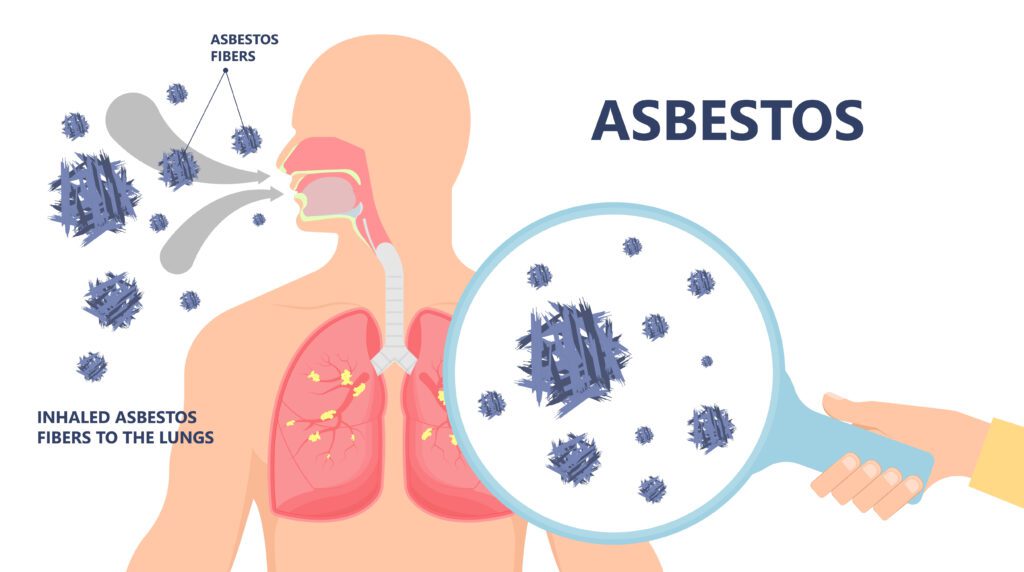
Many service members were exposed to Asbestos in the military—although it was rarely if ever, documented.
The VA will compensate veterans for asbestos-related conditions regardless of when they develop if the veteran can provide sufficient evidence of asbestos exposure.
To file a VA claim for a condition caused by asbestos exposure, a veteran must submit all the following:
- Medical records showing the diagnosis and current treatment of an asbestos-related condition
- Service or personnel records that list your job or specialty field
- A Nexus Letter that explains the connection between your contact with asbestos during military service and the illness or disability you suffer from today.
The VA will consider a veteran to have “probable” asbestos exposure while in-service if they worked in the following fields or with the following materials:
- Mining
- Milling
- Shipyards
- Demolition of old buildings
- Carpentry
- Construction
- Flooring
- Roofing
- Insulation
- Friction products (clutch facings and brake linings)
- Asbestos pipes
- Asbestos cement sheeting
- Military equipment containing asbestos
If none of the above apply, a veteran may still be able to claim asbestos exposure if they can provide sufficient evidence supporting probable in-service exposure.
This evidence can come from the veteran’s service records, service medical records, and other official sources.
Buddy letters from credible witnesses are very helpful to provide testimony of asbestos exposure.
What VA disability conditions are related to Asbestos Exposure?
The following 16 conditions are known to be related to Asbestos Exposure and are eligible for VA disability benefits:
- Asbestosis, DC 6833
- Atelectasis
- Colorectal cancer
- COPD (unless due to the veteran’s own willful misconduct, aka “smoking”).
- Esophageal cancer (unless due to the veteran’s own willful misconduct, aka “smoking” or “chewing tobacco”).
- Gastrointestinal cancer
- Histoplasmosis
- Kidney cancer
- Lung cancer, DC 6819 (unless due to the veteran’s own willful misconduct, aka “smoking”).
- Mesothelioma of peritoneum, rated analogous to DC 7343 (unless due to the veteran’s own willful misconduct, aka “smoking”).
- Mesothelioma of pleura, rated analogous to DC 6819 (unless due to the veteran’s own willful misconduct, aka “smoking”).
- Ovarian cancer, DC 7627
- Pharynx (throat) cancer, DC 7343
- Pleural effusions, rated analogous to asbestosis under DC 6833
- Pleural plaques, rated analogous to asbestosis under DC 6833
- Pulmonary fibrosis, rated analogous to asbestosis under DC 6833
#6. PACT Act Radiation Exposure Presumptive List
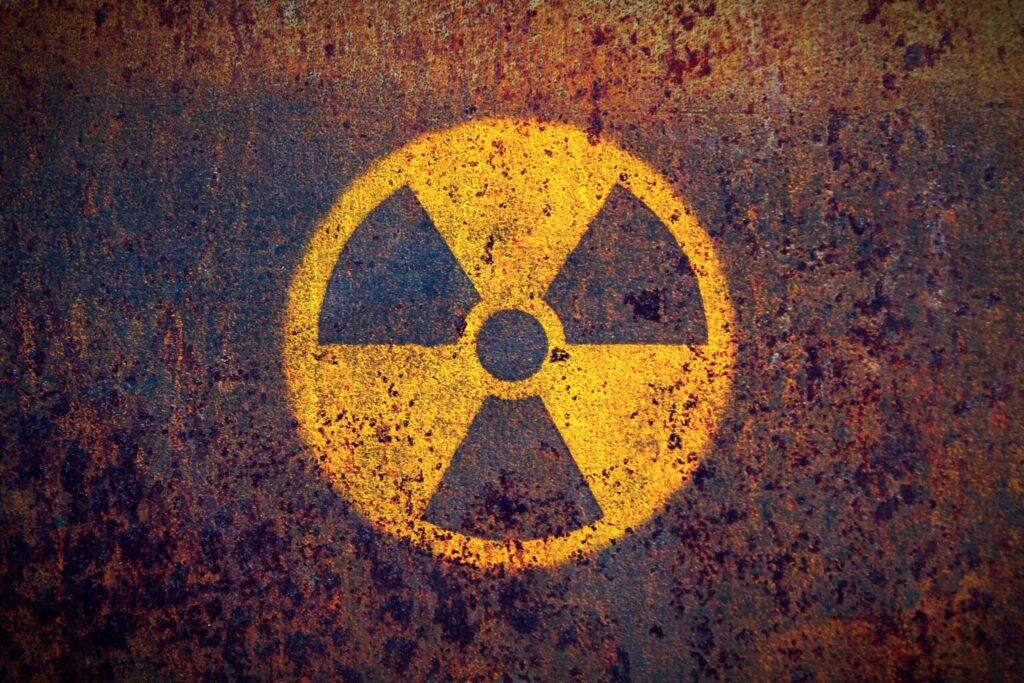
Radiation exposure refers to “Atomic Veterans” and includes veterans who were exposed to Ionizing Radiation during military service.
This category also applies to veterans who performed any of the following jobs or who served at the following locations during the designated time periods:
- You were part of atmospheric nuclear weapons testing
- You were within 10 miles of Hiroshima or Nagasaki between August 4, 1945, and July 1, 1946
- You were a prisoner of war in Japan within 75 miles of Hiroshima or 150 miles of Nagasaki, worked within those areas, or were repatriated through the port of Nagasaki between August 6, 1945, and July 1, 1946
- You were monitored with a dosimetry badge for radiation exposure on the grounds of a gaseous diffusion plant in Paducah, KY, Portsmouth, OH, or K25 at Oak Ridge, TN for at least 250 days before February 1, 1992
- You performed a job with as much exposure as a dosimetry badge monitor on the grounds of a gaseous diffusion plant in Paducah, KY, Portsmouth, OH, or K25 at Oak Ridge, TN for at least 250 days before February 1, 1992
- You were exposed to radiation from underground nuclear tests on Amchitka Island, AK before January 1, 1974
- You served in the garrison or maintenance forces at Eniwetok from June 21, 1951, to July 1, 1952, or August 7, 1956, to August 7, 1957, or November 1, 1958, to April 30, 1959
- You participated in the cleanup activities or nuclear responses in Palomares, Spain (between January 17, 1966, and March 31, 1967), Thule, Greenland (between January 21, 1968, and September 25, 1968), and Enewetak Atoll (between January 1, 1977, and December 31, 1980)
What is the Radiation Exposure Presumptive List?
The VA’s Radiation Exposure Presumptive List includes the following 20+ conditions.
Eligible veterans qualify for VA benefits if they were exposed to radiation during their military service and developed any of these conditions as a result.
- Leukemia, DC 7703 (except chronic lymphocytic leukemia)
- Breast cancer, DC 7627
- Pharynx (throat) cancer, DC 7343
- Esophageal cancer, DC 7343
- Stomach cancer, DC 7343
- Small intestine cancer, DC 7343
- Pancreatic cancer, DC 7343
- Non-Hodgkin’s Lymphomas, DC 7715
- Bile duct cancer, DC 7343
- Gallbladder cancer, DC 7343
- Primary liver cancer, DC 7343 (except if there is cirrhosis or hepatitis B)
- Salivary gland cancer, DC 7343
- Genitourinary cancer, DC 7528
- Bronchiolo-alveolar carcinoma, DC 6819
- Bone cancer, DC 5012
- Brain cancer, DC 8002
- Colon cancer, DC 7343
- Lung cancer, DC 6819
- Ovarian cancer, DC 7627
#7. Mustard Gas or Lewisite Exposure
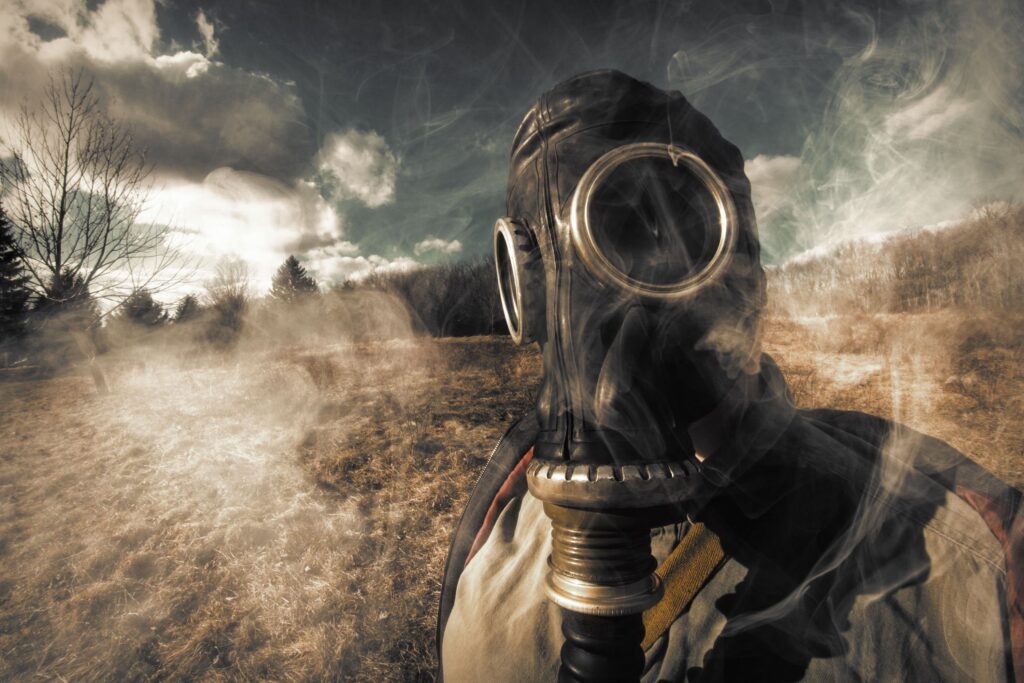
A veteran qualifies under the VA Presumptive List for Mustard Gas or Lewisite Exposure if they can prove full-body exposure to Mustard Gas (sulfur or nitrogen) or Lewisite while on active duty in one or more of the following ways:
If you were in the Army and served in these places:
- Bari, Italy
- Bushnell, FL
- Camp Lejeune, NC
- Camp Sibert, AL
- Dugway Proving Ground, UT
- Edgewood Arsenal, MD
- Naval Research Lab, Washington, DC
- Ondal, India
- Rocky Mountain Arsenal, CO
- San Jose Island, Panama Canal Zone
If you were in the Navy and served in these places:
- Bari, Italy
- Camp Lejeune, NC
- Charleston, SC
- Great Lakes Naval Training Center, IL
- Hart’s Island, NY
- Naval Training Center, Bainbridge, MD
- Naval Research Laboratory, VA
- Naval Research Laboratory, Washington, DC
- USS Eagle Boat 58
- Finschhafen, New Guinea
- Porton Down, England
If the veteran served at any of those locations during the presumptive period, then the following conditions qualify for presumptive service connection.
What is the VA’s Mustard Gas Presumptive List?
The following 14 conditions make up the Mustard Gas Presumptive List:
- Chronic conjunctivitis, DC 6018
- Keratitis, rated analogously under DC 6001
- Scars (must be from Mustard Gas exposure)
- Nasopharyngeal cancer, DC 6819
- Laryngeal cancer, DC 6819
- Lung cancer (except mesothelioma), DC 6819
- Squamous cell carcinoma, DC 7818
- Chronic laryngitis, DC 6516
- Chronic bronchitis, DC 6600
- Chronic emphysema, DC 6603
- Asthma, DC 6602
- Chronic obstructive pulmonary disease, DC 6604
- Acute non-lymphocytic leukemia, DC 7703 (for nitrogen mustard exposure only)
What is the VA’s Lewisite Exposure Presumptive List?
These 5 conditions are presumed to be service-connected due to Lewisite Exposure:
- Chronic laryngitis, DC 6516
- Chronic bronchitis, DC 6600
- Chronic emphysema, DC 6603
- Asthma, DC 6602
- Chronic obstructive pulmonary disease, DC 6604
#8. PACT Act Camp Lejeune Water Contamination Exposure

If you served at Marine Corps Base Camp Lejeune or Marine Corps Air Station (MCAS) New River in North Carolina, you may have had contact with contaminants in the drinking water.
Significant research and medical evidence have shown a connection between exposure to these contaminants and the development of certain diseases.
If you (including Guard and Reserve members) served at Camp Lejeune for at least 30 days between August 1, 1953, and December 31, 1987, and later developed one of the following conditions, it is “presumed” to be caused by your military service as of March 14, 2017.
What is the Camp Lejeune Presumptive List?
The following 8 conditions comprise the Camp Lejeune Presumptive List for service connection:
- Kidney cancer, DC 7528
- Liver cancer, DC 7343
- Non-Hodgkin’s lymphoma, DC 7715
- Adult leukemia, DC 7703
- Parkinson’s disease, DC 8004
- Aplastic anemia and other myelodysplastic syndromes, DC 7716
- Bladder cancer, DC 7528
#9. PACT Act Gulf War Syndrome Update

The VA Presumptive List for Gulf War Syndrome is divided into three categories: (1) Gulf War Syndrome, (2) Multi-Symptom Illnesses, and (3) Infectious Diseases.
Category 1: Gulf War Syndrome Presumptives
The first VA Presumptive List is by far the most ambiguous.
Gulf War vets began developing seemingly random, unconnected chronic symptoms that do not comprise a single identifiable diagnosis.
Because of this, the term “Gulf War Syndrome” was coined to mean a group of unrelated, but disabling, symptoms that many Gulf War veterans developed after serving in Southwest Asia.
If a clinical diagnosis can be made, then the symptoms do NOT constitute Gulf War Syndrome.
To be included under the heading of Gulf War Syndrome, each symptom must be present or reoccurring for at least 6 months (“chronic”) and cannot be tied to service outside Southwest Asia or be caused by the vet’s misconduct.
If Gulf War Syndrome is diagnosed before discharge, then those symptoms are service-connected.
However, if the symptoms develop after discharge, then those symptoms can qualify if they manifest to 10% before December 31, 2026.
Common Signs and Symptoms of Gulf War Syndrome Include:
- Fatigue
- Skin conditions
- Headaches
- Muscle pain
- Joint pain
- Neurological symptoms
- Mental health symptoms
- Respiratory symptoms
- Trouble sleeping (insomnia)
- Cardiovascular symptoms
- Abnormal weight loss
- Menstrual disorders
- Gastrointestinal symptoms
Category 2: Multi-Symptom Illnesses
The second Gulf War Syndrome Presumptive List covers Multi-Symptom Conditions with no known cause.
These are conditions that present a much higher level of disability than is medically justified due to a lack of clinical findings to explain the severity of symptoms.
Conditions with known or partially-known causes do not qualify.
Multi-Symptom Illnesses must be “chronic” and manifest themselves to at least the 10 percent VA rating criteria before December 31, 2026.
Multi-Symptom Illnesses include:
- Fibromyalgia, DC 5025
- Chronic Fatigue Syndrome, DC 6354
- Functional Gastrointestinal Disorders (e.g, GERD, IBS, functional dyspepsia, functional constipation)
Category 3: Infectious Diseases
For the final VA Presumptive List for Gulf War Veterans, veterans who develop one of the following infectious diseases qualify if they served in Southwest Asia or Afghanistan after September 19, 2001, unless there is sufficient evidence that the disease was not related to service.
All diseases must manifest to the 10% rating level within 1-year of the veteran’s discharge date unless otherwise specified.
- Brucellosis, DC 6316
- Campylobacter jejuni, DC 6630
- Coxiella burnetii (Q fever), DC 6331
- Malaria, DC 6304 (must be manifest to 10% within 1 year or the incubation period must have clearly begun while in service)
- Tuberculosis (no time limit for manifestation)
- Nontyphoid salmonella, DC 6333
- Shigella, DC 6334
- Visceral leishmaniasis, DC 6301 (no time limit for manifestation)
- West Nile Virus, DC 6335
Many of these infectious diseases can cause other symptoms or conditions to develop over time.
If a Gulf War veteran who qualifies for one of the above infectious diseases develops one of the following symptoms tied to that disease, it can also qualify for VA Disability.
The symptom must, however, develop within the time specified below or, if no time is specified, be medically linked to the infectious disease by a doctor.
What are Gulf War Presumptives?
The following 45+ conditions are included in the Gulf War Syndrome Presumptive List:
Brucellosis:
- Arthritis, DC 5002
- Infections of the Cardiovascular, Nervous, or Respiratory systems
- Deafness, DC 6100
- Demyelinating meningovascular syndromes, DC 8014
- Episcleritis, DC 6017
- Fatigue, inattention, amnesia, and depression
- Guillain-Barre syndrome, DC 8011
- Hepatic abnormalities, including granulomatous hepatitis, DC 7345
- Multifocal choroiditis, DC 6011
- Myelitis-radiculoneuritis, DC 8010
- Nummular keratitis, DC 6001
- Papilledema, DC 6026
- Optic neuritis, DC 6026
- Infections of the Genitourinary System
- Sensorineural hearing loss, DC 6100
- Spondylitis, DC 5240
- Uveitis, DC 6000
Compylobacter:
- Guillain-Barre syndrome, DC 8011 (must manifest within 2 months of the infection)
- Reactive Arthritis, DC 5002 (must manifest within 3 months of the infection)
- Uveitis, DC 6000 (must manifest within 1 month of the infection)
Q Fever:
- Chronic hepatitis, DC 7345
- Endocarditis, DC 7001
- Osteomyelitis, DC 5000
- Chronic fatigue syndrome, DC 6354
Malaria:
- Demyelinating polyneuropathy (DC depends on the nerves affected)
- Guillain-Barre syndrome, DC 8011
- Hematologic manifestations (anemia, DCs 7714-7723, after falciparum malaria, or splenic rupture, DC 7707, after vivax malaria)
- Immune-complex glomerulonephritis, DC 7536
- Retinal hemorrhage and scarring, DC 6011
Tuberculosis:
- Active tuberculosis
- Tissue damage from pulmonary and active tuberculosis (rated on the damaged tissue)
Nontyphoid Salmonella:
- Reactive arthritis, DC 5002 (must manifest within 3 months of infection)
Shigella Infection:
- Hemolytic-uremic syndrome, DC 7732 (must manifest within 1 month of infection)
- Reactive arthritis, DC 5002 (must manifest within 3 months of infection)
Black Fever (Leishmaniasis):
- Reactivation of visceral leishmaniasis, DC 6301
West Nile Virus:
- Encephalitis (inflammation of the brain)
- Meningitis (inflammation of the brain lining and spinal cord)
- Meningoencephalitis (inflammation of the brain and membrane)
- Headaches
- Musculoskeletal Conditions
- Mental Health Conditions
#10. PACT Act Burn Pit Presumptive Conditions Update
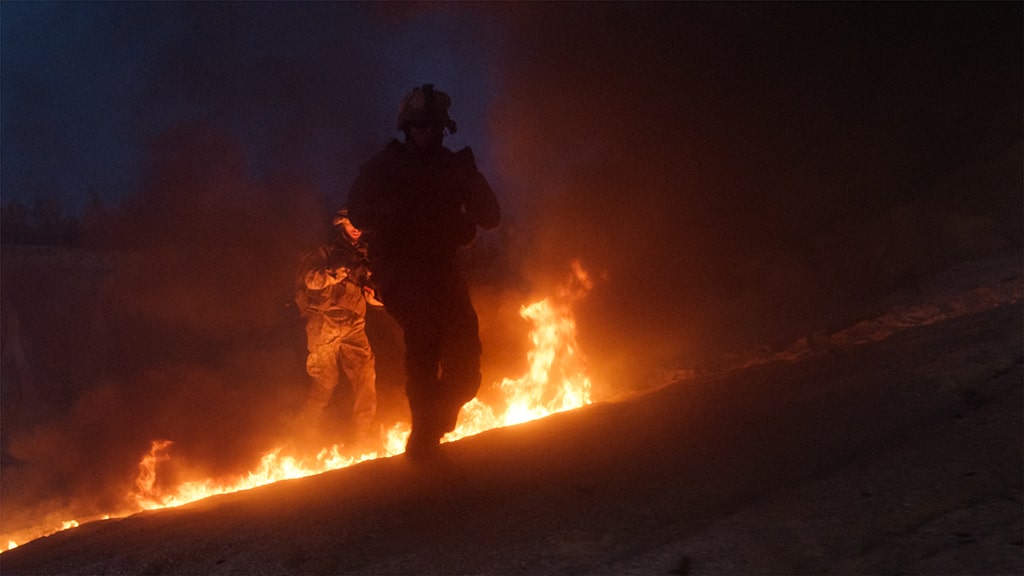
The PACT Act added Burn Pit and Particulate Matter Exposure to the VA presumptive list.
If a veteran served in Bahrain, Iraq, Kuwait, Oman, Qatar, Saudi Arabia, Somalia, the UAE, or the airspace above these locations on or after August 2, 1990, or served in Afghanistan, Djibouti, Egypt, Jordan, Lebanon, Syria, Uzbekistan, Yemen, or the airspace above these locations on or after September 11, 2001, it will be “presumed” that they were exposed to the following airborne particulates:
- Burn pit fumes and smoke
- Sand and dust
- General air pollution
- Fuel, jet fuel, exhaust, and mechanical fumes
- Smoke from oil well fires
If any of the following conditions develop anytime after the veteran’s date of discharge, it will be considered service-connected as of August 10, 2022.
What is the PACT Act Burn Pits Presumptive List?
These conditions are now presumed to be service connected for veteran’s exposure to burn pits and other airborne hazards:
- Asthma, DC 6602
- Rhinitis, DC 6522
- Sinusitis, DCs 6510-6514
- Asthma, code 6602 (cannot have been diagnosed before discharge)
- Chronic bronchitis, code 6600
- Chronic obstructive pulmonary disease, code 6604
- Constrictive or obliterative bronchiolitis, code 6600
- Emphysema, code 6603
- Granulomatous disease, code 6524
- Interstitial lung diseases, various codes
- Pleuritis, code 6845
- Pulmonary fibrosis, code 6825
- Sarcoidosis, code 6846
- Chronic sinusitis, codes 6510-6514
- Chronic rhinitis, code 6522
- Head cancer, various codes
- Neck cancer, code 6819
- Respiratory cancer, code 6819
- Gastrointestinal cancer, code 7343
- Lymphatic cancer, various codes
- Kidney cancer, code 7528
- Brain cancer, code 8002
- Melanoma, code 7833
- Pancreatic Cancer, code 7343
Need VA Disability Claim Help? WE’RE THE EXPERTS!
- VA Claims Insider is a highly-rated, veteran-owned and operated business.
- 25,000+ disabled veterans served in our membership programs since 2016.
- Employs 144 teammates; comprised of 44 veterans and 12 military spouses.
- 4.7/5.0 average rating out of 4,000+ total reviews; over 3,000 5-star reviews.
About the Author

Brian Reese
Brian Reese is a world-renowned VA disability benefits expert and the #1 bestselling author of VA Claim Secrets and You Deserve It. Motivated by his own frustration with the VA claim process, Brian founded VA Claims Insider to help disabled veterans secure their VA disability compensation faster, regardless of their past struggles with the VA. Since 2013, he has positively impacted the lives of over 10 million military, veterans, and their families.
A former active-duty Air Force officer, Brian has extensive experience leading diverse teams in challenging international environments, including a combat tour in Afghanistan in 2011 supporting Operation ENDURING FREEDOM.
Brian is a Distinguished Graduate of Management from the United States Air Force Academy and earned his MBA from Oklahoma State University’s Spears School of Business, where he was a National Honor Scholar, ranking in the top 1% of his class.





